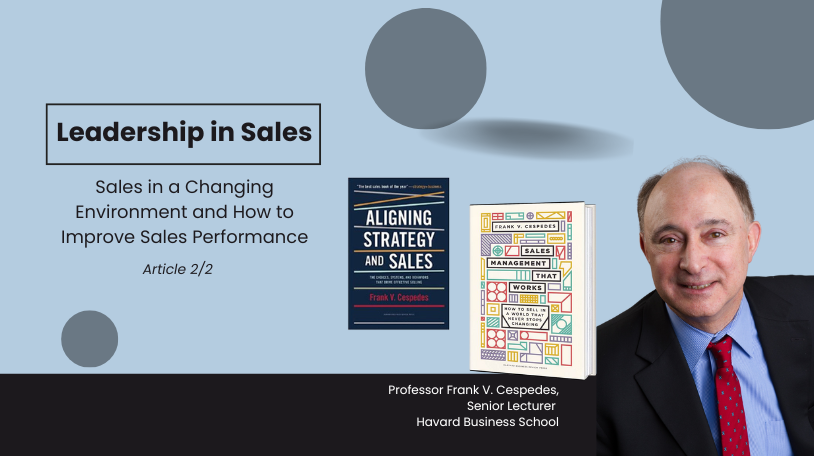
A New Era of Longevity: Living Longer and Working Longer
As global life expectancy rises, so will the average retirement age. In many advanced countries, longer lifespans and economic pressures are extending working lives well into the late 60s and beyond. This shift has created a new reality: a growing segment of the workforce is older and highly experienced. Yet these workers are often overlooked, underestimated or made redundant. In a previous article, we explored how stereotypes about Millennials and Gen Z being “entitled” can prevent leaders from fully engaging the potential of younger talent. In calling out such generational stereotypes, we must also acknowledge how older employees are equally subject to bias.
Older employees, especially those over 60, face a different set of limiting narratives: they are inflexible, outdated, or no longer driven. Some employees may view their older colleagues as slow to adopt new technologies and have difficulties communicating with them. At the same time, there are older employees who prefer tried and tested methods or disengage when struggling to keep pace with rapid change, reinforcing the perception that they’re simply “waiting it out” until retirement. As such, they are often casted as “stubborn” or “obsolete”.
Yet, the truth is more complex and nuanced. Each generation brings its own strengths shaped by their work values and effective leaders need to know how to harness those differences. This follow-up piece takes a closer look at the assumptions we make about older workers and discuss ways to reframe our narrative. By closely examining the stories we tell ourselves about older employees, we can challenge our unconscious bias and create a more inclusive and high-performing workplace for all.
60 is the New 40: Why are People Working Longer?
- Longer life expectancy: People are living healthier, longer lives, making early retirement less feasible.
- Economic necessity: Many older adults cannot afford to retire at traditional ages due to changing pension structures and increased cost of living.
- Purpose and identity: Work provides structure, social engagement, and a sense of purpose.
Too Old For Growth? Reframing The Narrative Around Older Employees
Human beings are innate storytellers and we are constantly crafting narratives about ourselves, others, our roles, and the generations we belong to. These stories help us navigate a complex world, offering quick explanations and familiar patterns. However, these stories can also become “shortcuts” that limit our understanding and they risk being oversimplified scripts that shape how we perceive others before we truly know them. This is apparent in the ways we narrate stories about ageing at work. We might assume that growing old means slowing down or that generational differences build up walls.
What if these stories are incomplete? What if there are richer, more generous ways to view the same people and situations? What if there are other perspectives that recognise nuance and shared purpose? This article is an invitation to question the common narratives we have about ageing and older employees in the workplace. Are the assumptions we carry about age helping us create better workplaces, or are they simply shutting doors that could actually remain open?
Age discrimination could lead to missed opportunities for mentorship and knowledge transfer. These sweeping generalisations we make about older employees tend to overlook the unique strengths and perspectives that each individual brings to the table. Older employees who feel undervalued may disengage or retire prematurely, taking their institutional memory and networks with them. Having a narrow focus on fresh graduates in hiring and younger workers in promotion overlooks the reality of demographic shifts. In many countries, birth rates are declining, and the availability of skilled talent is shrinking. Businesses will need to tap into all available talent, including those over 60.
Assumption #1: They Are “Slow” and Less Productive
Those who assume that older employees are too slow to keep up may have forgotten the timeless lesson of the hare and the tortoise. Sometimes, slow and steady really does win the race. In a world driven by constant change, older employees can bring thoughtful and deliberate decision-making that avoids hasty actions. While others might rush to keep up with the latest trend, their pace allows them to assess first and implement changes with precision. Competence does not simply diminish with age. This ageist bias ignores the value of different productivity styles. Many older employees continue to deliver good results, especially in roles requiring relationship building and complex decision-making. Older employees bring invaluable perspective, often looking beyond short-term metrics to anticipate challenges and envision long-term outcomes, helping organisations make strategic decisions.

Assumption #2: They are Set in Their Ways and Content With “Coasting”
This assumption stems from the idea that with age comes rigidity. However, older workers can be just as adaptable as their younger counterparts. They’ve adapted through decades of change: from analog to digital, the dawn of the Internet to the rise of AI. Their capacity to continually evolve in the workplace is evident in their survival through multiple organisational transformations and industry disruptions. What they may lack in digital fluency, they make up for in strategic thinking, clear judgment, and the ability to apply new knowledge with depth and context.
What may appear as resistance is more accurately a call for clarity, purpose, and thoughtful implementation. They challenge groupthink to help steer the organisation toward smarter and intentional choices. Some older employees tend to value structured transitions over sudden pivots. This is not because they cannot adapt, but because they have seen the cost of rushed change. The issue isn’t their ability to learn but whether the workplace is built to include their voices in the process. More often than not, they are left out of key decisions, overlooked as being outdated rather than engaged as experienced contributors. Older employees end up becoming sidelined, excluded from meaningful dialogue and made to feel invisible.

Assumption #3: They Struggle with New Technologies and Don’t Contribute to Innovation
Many older workers began their careers before the digital age and if they struggle with new systems, it’s often about the lack of adequate training and support. With new platforms and technologies emerging constantly, continuous learning is essential for everyone regardless of age. While digital natives like Millennials and Gen Z may adopt new tools more intuitively, older professionals bring valuable skills such as strategic thinking and long-term vision, which are critical for sustainable innovation. Initiatives like reverse mentoring are gaining traction, fostering cross-generational collaboration where older employees gain digital fluency while sharing their experience and insights with younger colleagues.

Assumption #4: They Don’t Get Along With Younger Colleagues
Just as older generations often generalise about “entitled” Millennials or Gen Zs, younger employees may assume that their older colleagues are “out of touch”. In reality, intergenerational collaboration has the potential to be a major strength, if organisations create environments grounded in mutual respect and support. Many older workers enjoy mentoring and learning from younger peers, and vice versa. When companies cultivate inclusive and open communication, cross-generational teams often outperform age-homogeneous ones. What unites people are common goals and values, not the years we were born.

It’s Not the Age, It’s the Environment
The challenges associated with older workers are wrongly attributed to age. We forget the role of the workplace environment—shaped by culture, systems, and leadership—that reinforces such outdated and problematic assumptions. By shifting the focus from age to environmental factors, leaders can uncover the real barriers and build more inclusive workplaces.
Issue #1: Lack of Ongoing Learning Opportunities
When workplaces neglect to invest in the development of older employees, they may unintentionally convey that growth opportunities are reserved for younger workers. This exclusion can lead to disengagement, as older employees feel overlooked and unsupported in their professional growth.
Leaders can:
- Embed lifelong learning into company culture by offering tailored development plans for all career stages
- Encourage older employees to join tech training, innovation labs, or cross-functional learning groups, placing emphasis on relevance and practical application
- Recognise and celebrate learning at every age to normalise growth across the board
Issue #2: Biased Hiring and Promotion Practices
When promotion and hiring decisions consistently favour younger talent, it fosters the belief that experience is a liability rather than an asset. This reflects an implicit bias and a lack of inclusive practices that fail to recognise the value that older workers bring to the table.
Leaders can:
- Provide bias training for hiring managers and ensure age is part of your diversity metrics
- Conduct inclusive succession planning that recognises experience as a strength
- Build intergenerational teams where mutual learning and shared goals are prioritised
Issue #3: Lack of Clear Career Pathways After a Certain Age
Disengagement often stems from career plateauing. Many older workers want to contribute meaningfully, but they encounter a ceiling, with fewer structured opportunities to grow, pivot, or take on new challenges. Without any clear pathways for continued development or redefined roles, their experience and motivation risk going untapped.
Leaders can:
- Offer lateral growth opportunities, such as strategic project work, mentoring roles, or internal consultancy positions
- Create spaces for career reflection where senior employees can express their aspirations and shape new roles that align with both their skills and organisational needs
- Introduce career programs that help experienced professionals transition meaningfully, not just exit quietly
Issue #4: Poor Communication Across Generations
Misunderstandings between generations do not stem from age itself, but from differing communication styles—and a lack of intentional effort to bridge them. Without opportunities to build relationships and understand one another’s preferences and values, assumptions can easily take root, leading to unnecessary friction or disconnect.
Leaders can:
- Promote reverse mentoring programs that foster mutual learning and reduce generational silos
- Include older workers in focus groups, advisory committees, and innovation discussions, signaling their perspectives are valued
- Invest in intergenerational team-building activities to create trust, empathy, and shared purpose
Sometimes all older workers are lacking is opportunity and support. When older employees appear to be disengaged, it’s not because they no longer care, but because they may feel undervalued or excluded from meaningful roles. Yet, these workers bring value to the workplace: institutional knowledge, mentorship potential, and a steady presence during times of change. Rather than assuming disengagement is a product of growing older, leaders should ask whether the work environment is offering older employees the recognition, challenge, and inclusion they need to thrive.
Beyond the Golden Years: Embracing a Phased Approach for Lasting Contributions

Addressing these challenges within the workplace is only part of the equation. We also need to reconsider how we can support them as they transition out of their roles. That could mean redefining retirement as a continuum of evolving contributions. Retirement is often seen as a sharp transition, marked by a single, final milestone. One day, an employee is working full-time, and the next, they are retired. This abrupt shift is not only jarring but it can strip individuals of more than just their income. It abruptly takes away their sense of purpose, identity, community, and daily routine, leaving many with a profound sense of emptiness. To ensure that this transition is both dignified and structured, it’s critical to rethink retirement as a continuum rather than a sharp cutoff point.
Phased retirement options, such as reduced hours, mentorship roles, and project-based consultancy, allow older employees to gradually step down while continuing to contribute in meaningful ways. For many, the desire to serve doesn’t diminish with age. By creating internal roles that leverage their institutional knowledge, we can retain their technical expertise and wisdom, while providing a more graceful transition. It is important for teams to plan for this transition well before the official retirement date. Providing opportunities for older workers to train successors, lead knowledge-sharing initiatives, and stay engaged through alumni networks help to preserve their impact. This approach not only allows them to continue contributing to the organisation’s success, but also celebrates their long-term influence, signaling that their value extends far beyond the moment of retirement.
Conclusion: A Call to Lead Differently
Now is the perfect time to reimagine what it means to be an older professional. As people live and work longer, the presence of older employees are a present reality. How can we challenge the assumptions we hold about ageing in the workplace? How do we build the kind of environment we will want to be part of when we reach that stage ourselves?
Because the truth is: we are all ageing. One day (and that day may come sooner than we might think), we will be the oldest person and the most seasoned professional in the room. We will want to bring our experience, our insight, and maybe a steadier pace. We will want to be seen, heard, and respected. If we want that future for ourselves, we must start shaping it now. That begins with how we treat older workers today. We need to reflect on our biases and question the stories we’ve accepted about age and ability. We need to design systems that value contribution at every stage of a career. We need to build workplaces where respect, inclusion, and growth are not limited by age.
The way we treat older employees now could shape the future of work for all of us.
Stay ahead with exclusive insights! Sign up for our mailing list and never miss an article. Be the first to discover inspiring stories, valuable insights and expert tips – straight to your inbox!




